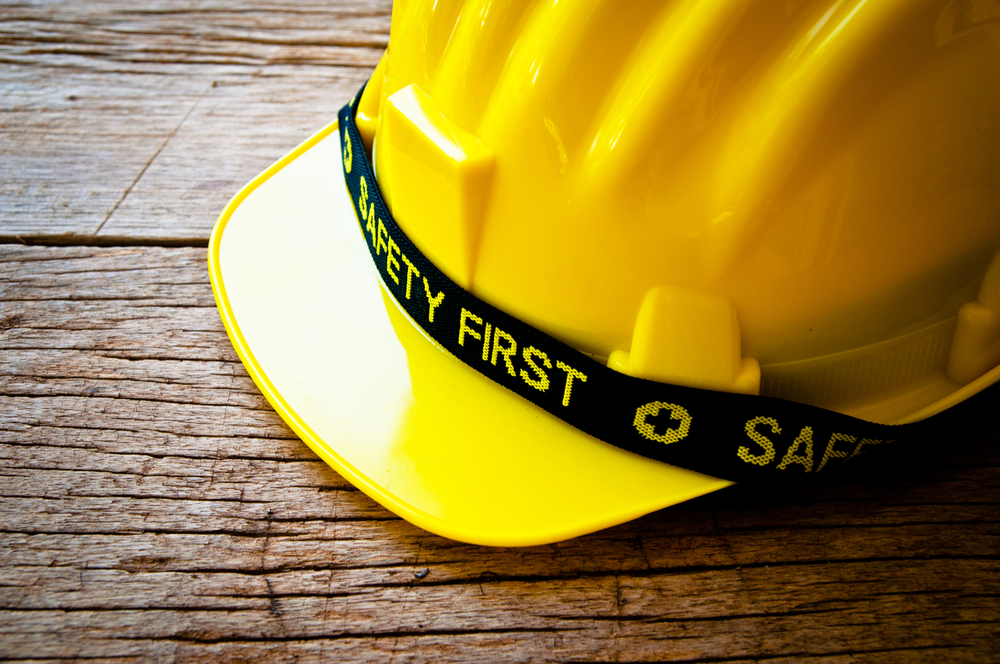News Post
October 2015 Newsletter
Driving Licence Checking Made Easy
How safe are your drivers?
If any employees working at your organisation are required to drive as part of their work, the law says that the company must check that they are qualified to drive and hold a valid licence. Employee driving licences should be an essential part of your risk assessment and Duty of Care. Directors and Managers may be personally at serious risk of prosecution and a serious investigation in the event of a fatality involving a driver at their company.
This can be done quickly and easily by logging in to the DVLA ‘Live’ database with the most accurate data by just following the the five easy steps on the link:-
https://dvladigital.blog.gov.uk/
To check someone’s driving licence information you will need:-
• the last 8 characters of their driving licence number
• a check code from the driver – the check code is only valid for 21 days and can be used only once
*Please note however, under the Data Protection Act an employee must consent to their driving licence being checked.
Further detail on licence categories, restrictions, endorsements, expiry dates and more can be found on the following link:-
http://files.fleetnews.co.uk/Driver_Licence_Check_Guide.pdf
Travel to and from work counts as working time – ECJ ruling
Time taken to travel to and from work for non-office based employees will now be considered ‘working time’, the European Court of Justice has ruled.
This time has not previously been considered work by many employers. It means firms – including those employing care workers, gas fitters and sales reps – may be in breach of EU working time regulations. Excluding those journeys from working time would be contrary to the objective of protecting the safety and health of workers pursued by EU law, says the ECJ.
The case concerns Spanish security system installation company Tyco, whose technicians use company vehicles to travel to appointments across Spain. The employer argued that the first journey of the day (from home to the first appointment) or the last journey of the day (from the last assignment to home) do not count as “working time”.
Kent boys’ school fined over pupil’s head injuries
The governors of a boys’ school in Tonbridge have been prosecuted after a 14-year-old pupil was severely injured when he was hit by a shot put thrown by another boy.
The incident happened during a routine multi-sport PE lesson at The Judd School in Tonbridge on 20 June 2014. The pupil had left a triple jump area and was standing on the edge of the shot put landing zone to check a friend’s throw when he was struck on the back of his head by a shot.
The pupil suffered life-threatening injuries and needed emergency brain surgery on a fractured skull. He has now returned to school but his injury has resulted in a permanent indentation at the base of his skull.
The Health and Safety Executive (HSE) investigated and identified the school had not adopted measures in its own risk assessment and PE guidance on multi-event lessons had not been followed.
Sevenoaks Magistrates were told today (24 March) that there were 24 boys in the lesson, divided into six groups and taking part in hurdles, long jump, triple jump, javelin, discus and shot put. It was a lesson format used regularly at The Judd School and the pupils had participated in similar lessons in previous years.
The six sports were spread across the field but the end of the landing zone for the shot put was only about three metres from the end of the triple jump sand pit, where the 14-year-old was competing.
When the whistle blew to mark the end of the session, he left the triple jump and went to the shot put to see how far his friend had thrown. At the same time, another pupil was completing his throw, turning as he did so he was facing away from the zone.
The shot hit the pupil on the back of the head, causing a severely fractured skull and internal swelling. He was in hospital for nearly a month but was able to return to school the following term.
The court heard the teenager is no longer able to take part in some contact sports and may suffer longer-term issues.
HSE found the school had carried out a risk assessment for PE lessons. However, although it had referenced the guidance by the Association for Physical Education, it did not follow their recommendation that such lessons be restricted to a maximum of four sports with only one to be a throwing event.
The school’s inclusion of six sports with three throwing events, had significantly increased the risks to pupils, as had the proximity of the triple jump pit to the shot put landing zone.
The Governing Body of The Judd School, Tonbridge, Kent, was fined £10,000 and ordered to pay £1,375 in costs after admitting a breach of Section 3(1) of the Health and Safety at Work etc Act 1974. Magistrates agreed with HSE that the safety breach had been ‘substantial’
After the hearing, HSE inspector Kevin Golding said:
“By not adopting the measures identified in their own risk assessment, The Judd School put pupils at serious risk leading to a 14-year-old boy being struck by a shot put and suffering life-threatening injuries. It was a horrifying incident for him and his family and, of course, the rest of the pupils and the school itself.
“While he is thankfully back at school, he will have to live with the consequences of the incident for the rest of his life.
“It is vitally important that schools review their risk assessments for all PE lessons, but in particular for multi-sports lessons, to check that they are safe.”
There is guidance available through the Association for Physical Education at: http://www.afpe.org.uk/
Manslaughter summons over giant window frame death
Four individuals and three companies have been summonsed to appear at Westminster Magistrates’ Court next week following the death of a passer-by near a London fit-out job.
Amanda Telfer was crushed to death by a falling window frame in Hanover Square, W1 in August 2012.
She died under the 12ft frame after it was blown over in strong winds.
The court appearances follow an investigation into the death by the Met Police’s Homicide and Major Crime Command and the Health and Safety Executive.
Damian Lakin-Hall, 48, of Cobham, Surrey is summonsed for manslaughter by gross negligence and S7 (a) Health & Safety at Work Act 1974: Employee breaching general duty at work.
Claire Gordon, 35, of Leeds, is summonsed for manslaughter by gross negligence and S7 (a) Health & Safety at Work Act 1974: Employee breaching general duty at work.
Kelvin Adsett, (aka Kelvin Schultz), 63, of Slough, Berkshire is summonsed for manslaughter by gross negligence and S7 (a) Health & Safety at Work Act 1974: Employee breaching general duty at work.
Steve Rogers, 61, of Sawbridgeworth, Hertfordshire is summonsed for S7 (a) Health & Safety at Work Act 1974: Employee breaching general duty at work.
Company, I S Europe Ltd of Slough, Berkshire is summonsed under S2 Health & Safety at Work Act 1974: Employer breaching general duty of care to an employee and S3 Health & Safety at Work Act 1974: Employer or self employed person breaching general duty of care to non-employee.
Company: Westgreen Construction Ltd of Richmond, Surrey is summonsed under S2 Health & Safety at Work Act 1974: Employer breaching general duty of care to an employee and S3 Health & Safety at Work Act 1974: Employer or self employed person breaching general duty of care to non-employee.
Company: Drawn Metal Ltd of Leeds, West Yorkshire is summonsed under S2 Health & Safety at Work Act 1974: Employer breaching general duty of care to an employee and S3 Health & Safety at Work Act 1974: Employer or self employed person breaching general duty of care to non-employee.
£75,000 fine for legionella risk
A company has been fined £75,000 after failing to manage the risks from legionella bacteria at two cooling towers.
The steel coating company, Colicolor Limited, was investigated by the Health and Safety Executive (HSE) and was found to have been operating two cooling towers on site without taking appropriate measures to control the risk of proliferation of the bacteria over a period of five years.
HSE found that the risks that occur from the operation of cooling towers had not been assessed, there was no written scheme, the two towers were in poor condition, there was no water treatment programme in place, staff had not been trained to managed risks and drift eliminators to reduce the spread of aerosol were missing.
Newport Crown Court heard that during the visit from HSE in February 2014 prohibition notices were served immediately by the HSE inspector, preventing the cooling towers from being used until all appropriate controls were in place. Improvement Notices were then served with regard to risk assessment and management.
Coilcolor Limited, of Whitehead Estate, Docks Way, Newport, Gwent was fined a total of £75,000 and ordered to pay £28,393 in costs after pleading guilty to offences under Section 2(1) (£30,00) and 3(1) (£45,000) of the Health and Safety at Work etc. Act 1974.
An HSE inspector, said: “Operating cooling towers, without proper controls in place can present a significant risk to employees and members of the public; in this case the company operates next to a housing estate and within one kilometre of the Royal Gwent Hospital.”
Construction company fined for insecure site
A construction company has been fined for safety failings which led to a two-year-old boy wandering onto a building site.
360 Property Limited were the principal contractor for a new build housing development at Oak Road, Blaina. An improvement notice was served on the site after site security issues were not addressed, despite a previous visit from a HSE inspector who highlighted concerns.
Newport Magistrates’ Court heard on 20 August how, between 22 January 2015 and 10 June 2015, the construction site was inadequately secured. On 21 May 2015, a two-year-old child had gained access to the site and was riding his bike when he fell into a drain, the cover of which had been removed. Fortunately, the child was shaken but not injured.
360 Property Limited was fined a total of £10,000, and ordered to pay £6,668.15 in costs after pleading guilty to two offences under section 27(2) of the Construction (Design and Management) Regulations 2007 and section 18(2) of the Construction (Design & Management) Regulations 2015, effectively one offence split by the change in regulations.
An HSE inspector said: “It is absolutely imperative that construction companies adequately secure their construction sites to prevent unauthorised access. Construction sites can contain hazards that children and vulnerable people may not fully appreciate.”
Transport company fined £150k for work at height breaches following fatality
A Norfolk-based road transport company has been sentenced for safety failings after a driver suffered life-changing injuries which left him in a permanent vegetative state following an incident in Broxbourne, Herts. The driver, died two years later having never recovered from his injuries.
The driver fell from an unsecured ladder during an operation to unload items from a lorry at the Hertfordshire Golf and Country Club on White Stubbs Lane on 23 November 2012.
He sustained extensive brain damage as well as a broken cheekbone, collarbone and ribs. He was in a coma for four months and in hospital for a further two months. After his release from hospital he needed palliative care in a nursing home and was unable to move, swallow or communicate. He died two years later in December 2014.
The incident was investigated by HSE which prosecuted the driver’s employer, David Watson Transport Ltd, after finding the company had failed to properly safeguard workers from falls.
At the sentencing it was heard how there were serious failures as far as the supervision of the employees. The judge observed that “the total absence of supervision in this case in my view significantly contributed to the existence of a dangerous state of affairs and thus directly in the chain of causation to the incident itself and the death of the driver”.
David Watson Transport Ltd of Mundford Road, Weeting, Norfolk, was fined a total of £150,000 at St Albans Crown Court and ordered to pay costs of £88,030.69 after being found guilty to three counts of the Work at Height Regulations 2005.
After the case, the HSE inspector, said: “This fall was entirely preventable and resulted in an employee being left in a permanent vegetative state owing to a traumatic brain injury. It was, of course, devastating for his family and friends. Sadly he died two years later.
“The risks of falling from height during unloading lorries is well known across the industry. There is absolutely no excuse for companies to neglect safety. David Watson Transport Ltd’s failure to adequately plan working at height and provide adequate supervision resulted in horrific injuries from which the driver never recovered.”
Hugo Boss fined £1.2m for health and safety breaches
Hugo Boss has been fined £1.2m after a four-year-old boy died at one its shops.
Austen Healey was killed by an 18-stone (114kg) changing room mirror, which fell on him at the Hugo Boss outlet in Bicester Village in 2013.
He was rushed to the John Radcliffe Hospital, Oxford, where he underwent an emergency operation to relieve pressure on his brain but died four days later in hospital after his life-support machine was switched off.
Hugo Boss admitted to health and safety breaches at a hearing at Banbury Magistrates’ Court on 2 June for failing to secure mirror.
Jonathan Laidlaw QC, defending, entered a guilty plea for the company to offences under the Health and Safety at Work Act 1974 and the Management of Health and Safety at Work Regulations 1999.
However, Barry Berlin, prosecuting on behalf of Cherwell District Council, told the court that the label should be sentenced at the crown court because the maximum fine at magistrates’ court was only £20,000.
He suggested the case should be sentenced in the crown court where the recommended starting point of a £100,000 fine per offence could be imposed or even exceeded.
“Plainly this a very serious matter relating to a child aged four-and-a-half who on June 4 2013 was struck on the head by a seven feet tall, 18 stone free standing three-way mirror,” he added.
“It wasn’t fixed to the wall despite its own requirements. We say, bearing in mind that the injuries the child sustained resulted in his death, that this is a case that should be dealt with in the crown court.”
An inquest concluded the mirror should have been fixed to a wall, while coroner Darren Salter described the incident as “an accident waiting to happen”.
In sentencing the company today (4 Sep), Oxford Crown Court Judge Peter Ross said Hugo Boss had a “corporate responsibility”, and he wanted to ensure the issue went to the “very top of the company”.
He said it “would have been obvious to the untrained eye” that the mirror posed a risk, adding that it was “nothing short of a miracle” that it had not happened sooner.
Health and Safety Legislation and Guidance
Ensuring safe student placements
By Paul Verrico and Laura Wilmshurst
As readers of SHP are aware, prosecutions under the Corporate Manslaughter and Corporate Homicide Act 2007 have been gathering pace.
Earlier this week Huntley Mount Engineering Ltd (“Huntley Mount”) was sentenced for corporate manslaughter following the death of Cameron Minshull. Mr Minshull was completing an apprenticeship at Huntley Mount when he suffered a fatal injury after becoming entangled in a lathe on 8 January 2013.
Huntley Mount was fined £150,000 following a guilty plea. Zaffar Hussain, the director of Huntley Mount, was imprisoned for breaches of both section 2 and section 37 of the Health and Safety at Work etc Act 1974 (“HSWA”). Additionally, his son, Akbar Hussain, a supervisor at Huntley Mount, was sentenced for a breach of section 7 of HSWA. Both pleaded guilty to the respective charges.
However, it is the prosecution of Lime People Training Solutions Ltd (“Lime People”) which may be of particular interest to readers who are employed by educational institutions. Lime People was the recruitment agency who organised the placement of Mr Minshull with Huntley Mount. It was prosecuted for a breach of section 3 of HSWA. This prosecution is considered in more detail below.
The Offence
An offence under section 3 is committed where an employer conducts their undertaking in such a way that they expose those, not in their employment, to risks to their health and safety. This can include contractors, visitors and students. Such a duty is not absolute, what must be demonstrated is that what was done was all that was reasonably practicable. The duty is on the employer to demonstrate that they have fulfilled that duty – what we lawyers call a ‘reverse burden of proof.’
Lime People, in administration, was not present in court and was subsequently found guilty at trial. During the trial it was alleged that the placement of Mr Minshull was accelerated in order to receive government funding. It was also alleged that proper checks were not undertaken, thereby exposing Mr Minshull to risk.
Despite going into liquidation, Lime People was sentenced to a fine of £75,000 and ordered to pay £25,000 in Prosecution costs.
Considerations for Placement providers
Where educational institutions, including schools, further and higher education providers, are organising placements, such as work experience or sandwich courses, they could find themselves exposed if they do not take sufficient steps to ensure student’s safety. The level of involvement of any organisation in arranging the placement will in part determine what steps they should take. Both the Association of Colleges and UCEA issue guidance on what duty holders can do.
The following are just a number of potential considerations and steps that could be taken:
Know Your Provider
Conduct due diligence of the proposed placement provider. What due diligence is proportionate will depend on a range of factors, but may encompass a site visit and a review of their health and safety history for instance, have they been in receipt of any Improvement or Prohibition Notices or convictions. Consideration could be given to compiling an approved placement provider list. It is understood that some recruiters had concerns about Huntley Mount and placing people there. Undertaking due diligence about providers helps to ensure that any concerns are identified and can be acted on as appropriate.
Get Feedback
Where a placement provider is used ensure that feedback is taken from students about their experience. Within this feedback cover matters such as health and safety on site; training and inductions and the provision of suitable personal protective equipment as required. In the case of Huntley Mount, it was recognised that there was a failure to train and supervise employees.
Additionally, the overalls provided to Mr Minshull, which became trapped in the lathe, were described as being oversized. Feedback may help determine whether a placement provider should not be recommended in future or if changes can be made to ensure that any placement runs safely in future.
Maintain Records
Ensure that records for each placement provider are kept up to date and ideally centralised. If different departments of an organisation are using the same placement provider information should be shared between them, especially if there are any concerns.
The Potential Consequences
The consequences of breaching health and safety legislation can be far reaching. Whilst this case tragically led to the death of Mr Minshull, offences under health and safety legislation can be committed where no injury has been suffered.
Moreover, the importance of understanding health and safety has never been more key. The Sentencing Council recently consulted on new Sentencing Guidelines for health and safety offences, corporate manslaughter and food safety and hygiene offences. These Guidelines would significantly increase the level of fines for health and safety offences in most cases. One of the proposed criteria to determine the level of fine is to consider the turnover of the organisation. A large organisation is one with turnover of £50 million and over which would include many universities and a few colleges.
The proposed starting point for a large organisation where an accident is determined to be in harm category 1, which would encompass fatal accidents, and they are found to have very high culpability would be a fine of £4,000,000.
Safety is increasingly coming under scrutiny. It is crucial that organisations are fully aware of their obligations and the compliance measures that have been taken. If there are any areas which have not been considered, ensure that these are addressed as soon as possible.
We understand that the HSE is updating their apprentices webpages in anticipation of a renewed focus on apprentice health and safety once Huntley Engineering came to trial. The HSE is aiming to launch the revised pages shortly. The revised guidance will explain how these duties can be discharged by colleges and universities, and will cover different types of apprenticeship training arrangements.
Paul Verrico is a Principal Associate and Laura Wilmshurst is an Associate in the Eversheds Health and Safety Team.
Latest News
Health and Safety in Schools Checklist
Health and safety should be a top priority in any workplace, but especially in schools. Not only are you responsible for your staff’s safety, but you need to maintain the welfare of your pupils too. To do so, you must uphold your legal complian..
It can be difficult to decide your future path - a lot can ride on it, after all - but a career in health and safety could be the right choice for you. There are several types of careers in the health and safety industry that might be a good fit..
What is ISO 45001?
If you’re wondering what ISO 45001 is, then this is the guide for you. Replacing the old OHSAS 18001 standard, ISO 45001 is the new international standard for occupational health and safety management. In this guide, we'l..
Who Enforces Health and Safety?
The enforcement of health and safety is crucial to maintain healthy workplaces. The term health and safety itself covers the safety legislation and safety law that comes under the Health and Safety at Work Act 1974. In general, this means t..
Health and safety training is a requirement in the workplace, no matter which sector you work in. Our experts at SMS Europe have been providing an extensive range of specialist health and safety services for almost 20 years. To help make work en..
Health and safety in the workplace is all about controlling risks in a way that protects both your employees and your company. Strong leadership, including your employees, managers, suppliers, contractors, and consumers, is a characteristic of great ..
Health and safety in the workplace is immeasurably important. But, without the Health and Safety at Work Act of 1974, we might have never prized safety so highly. This piece of workplace legislation is highly significant and indeed has transform..
Fire Safety and Fire Risk Assessment at Leased Offices and Buildings Fire safety at leased single and multi- tenanted offices can be approached in a number of ways. Generally speaking, there are three types of premises, (single occupancy lea..
Safety Gloves
Please have a read at SMSE Managing Director Philip Marsden's article on Safety Gloves which is published in the February 2022 edition of Health and Safety International Magazine. https://www.hsimagazine.com/article/fits-like-a-glove/ We wo..
Current Health and Safety Industry Trends
New Guidance Released for Managing Home Workers As an employer, you have the same health and safety responsibilities for those who work from home as you do for all other employees who may work from the workplace. In most cases, the dange..
Who Is Responsible for the Health and Safety on a Building Site? Legally, the responsibility of health and safety within the business lies with the employer. It is up to them to make sure the environment meets the necessary health and safety requi..
No one wants to be injured whilst at work, and no one wants their staff to be injured, especially whilst on the job. That doesn’t mean that accidents don’t happen. In fact, each year an average of 22 manufacturing workers die in workplace..












